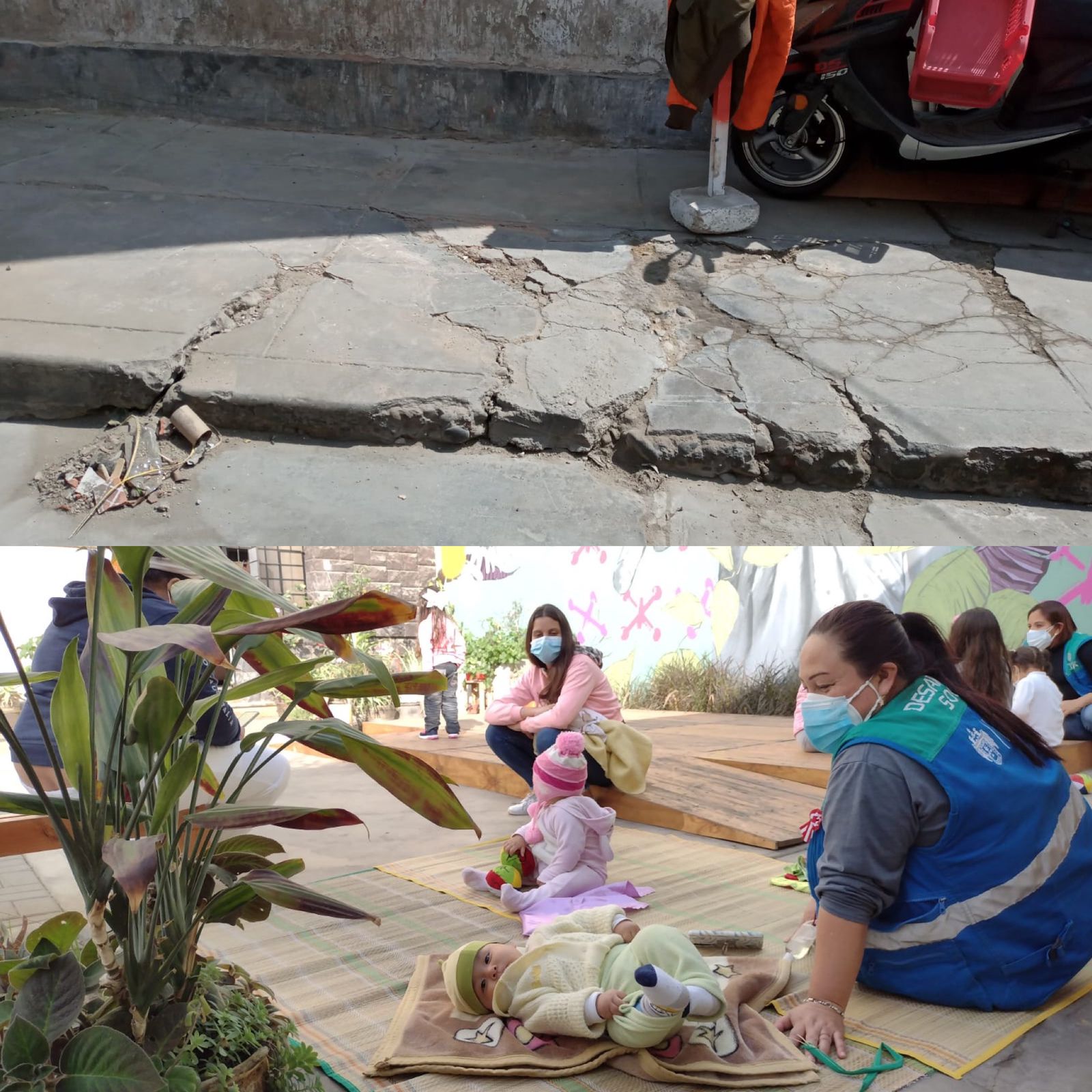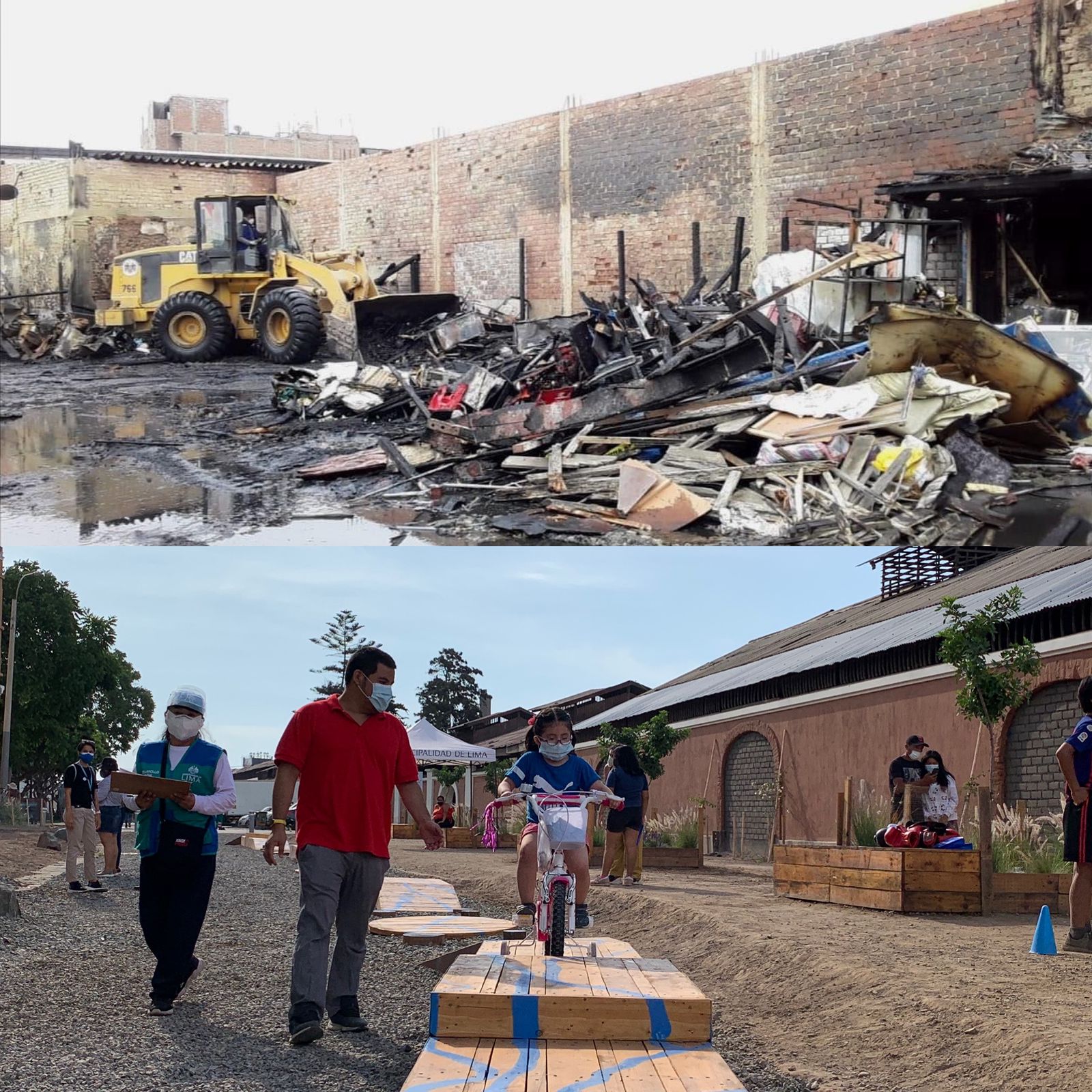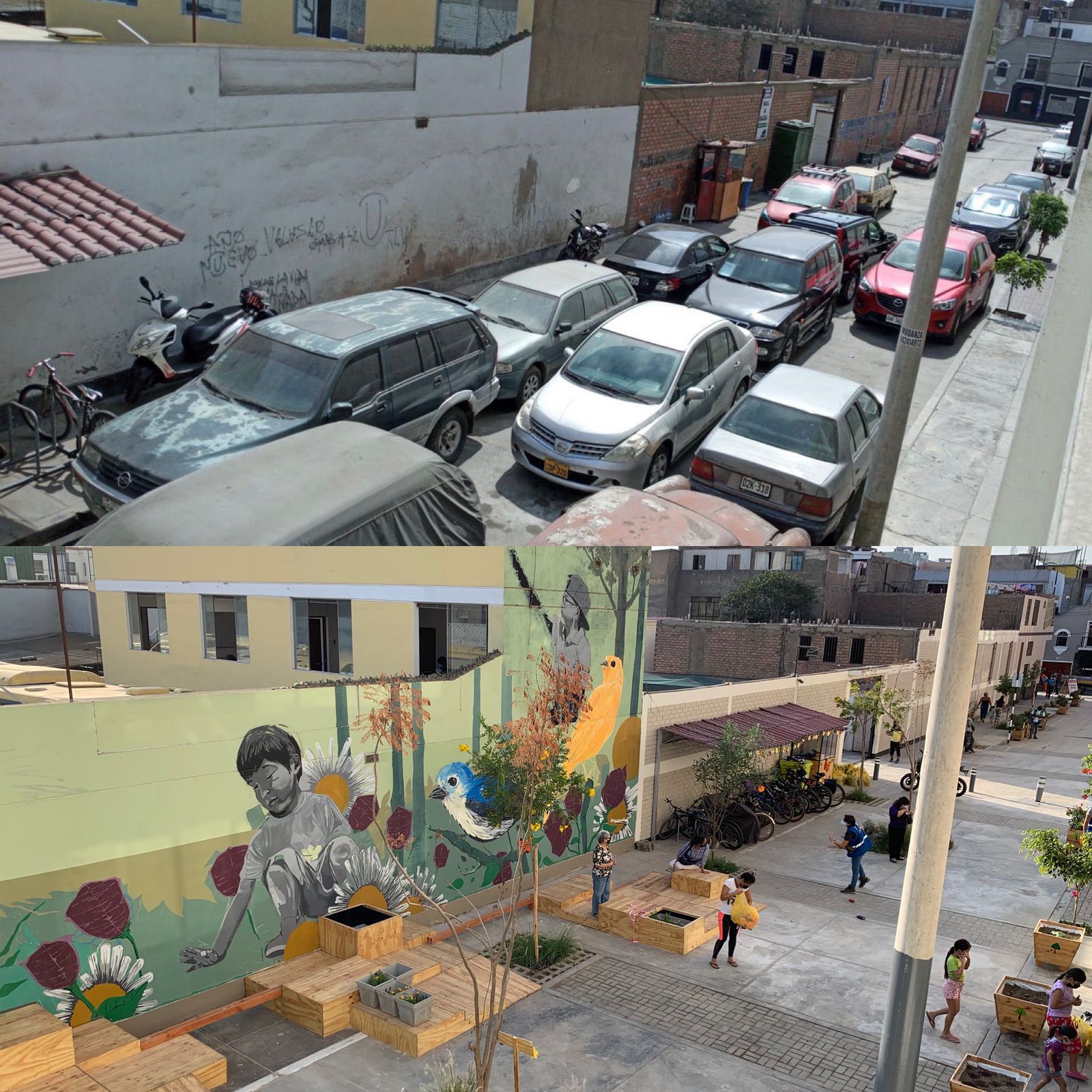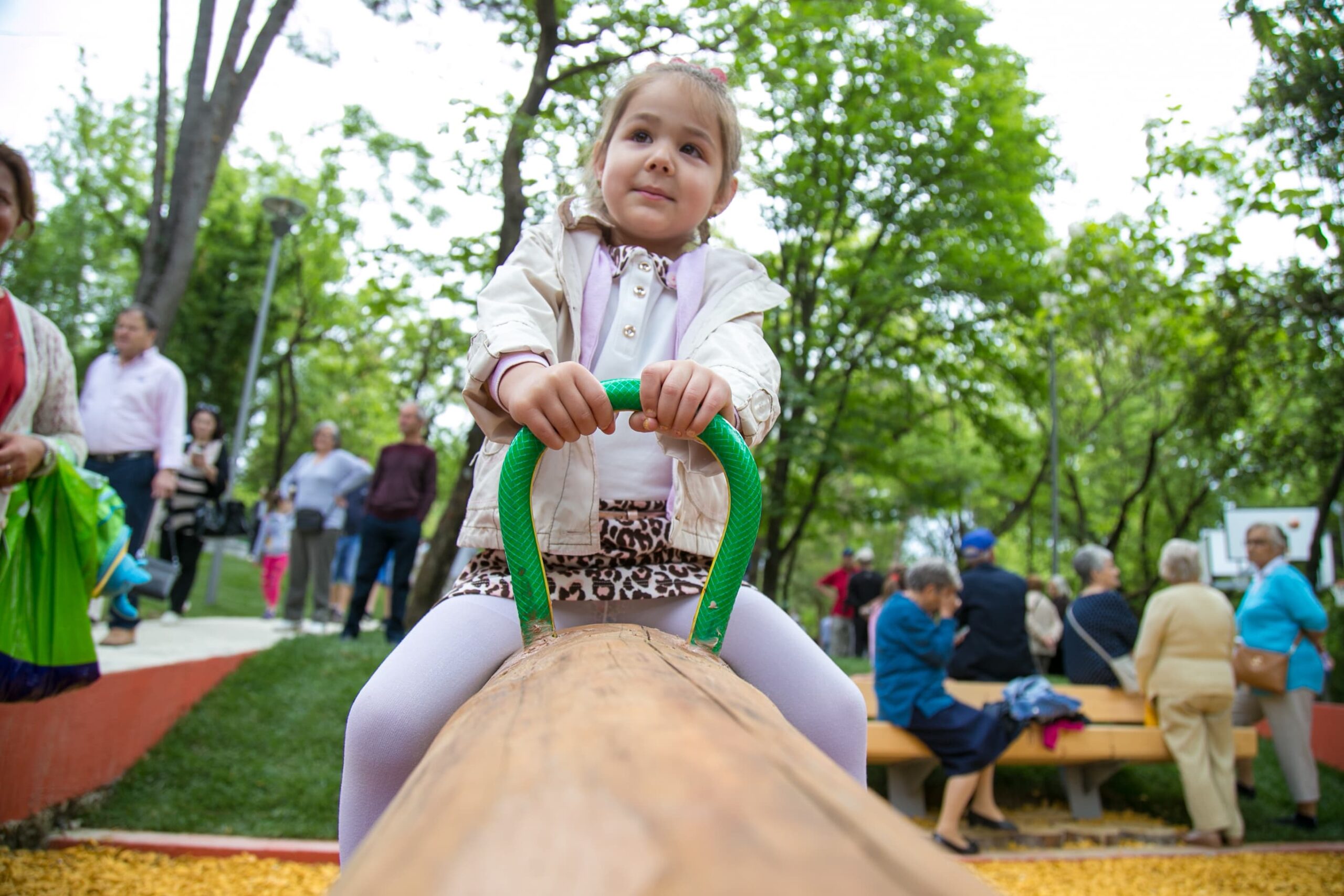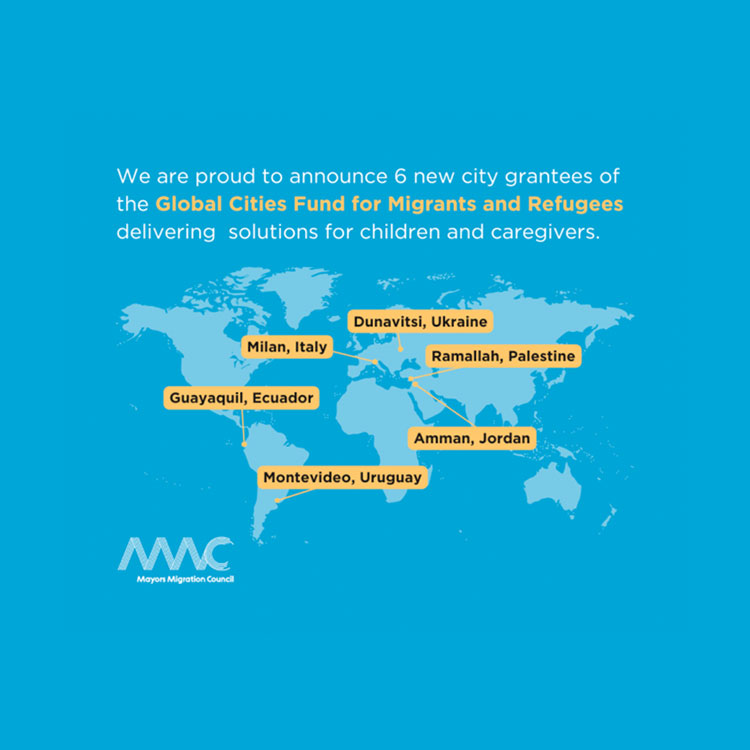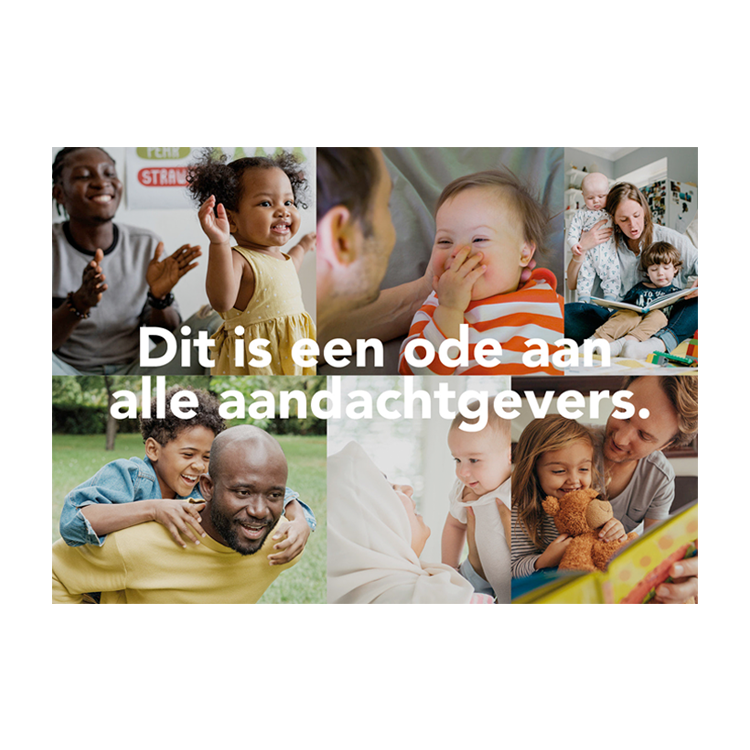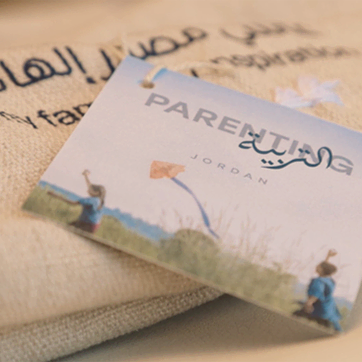Lima is undergoing a transformation of public space. So far the municipal government has completed work in 12 previously neglected spaces in neighbourhoods across the city, with the Foundation’s support, to make them pleasant and attractive for caregivers to spend time with their young children. Although the Foundation is phasing out of Peru, the city is continuing the initiative and aims to reach 40 transformed spaces by mid-2022.
The project is part of Limeños al Bicentenario – a celebration of 200 years since Peru’s independence. As work started in late 2019, the interventions so far were completed despite the pandemic – and they helped with social distancing by enabling local communities to co-create proximity solutions to access open space without needing to travel on crowded public transport. Already the ongoing work has won awards for good practice in public management and urban walkability.
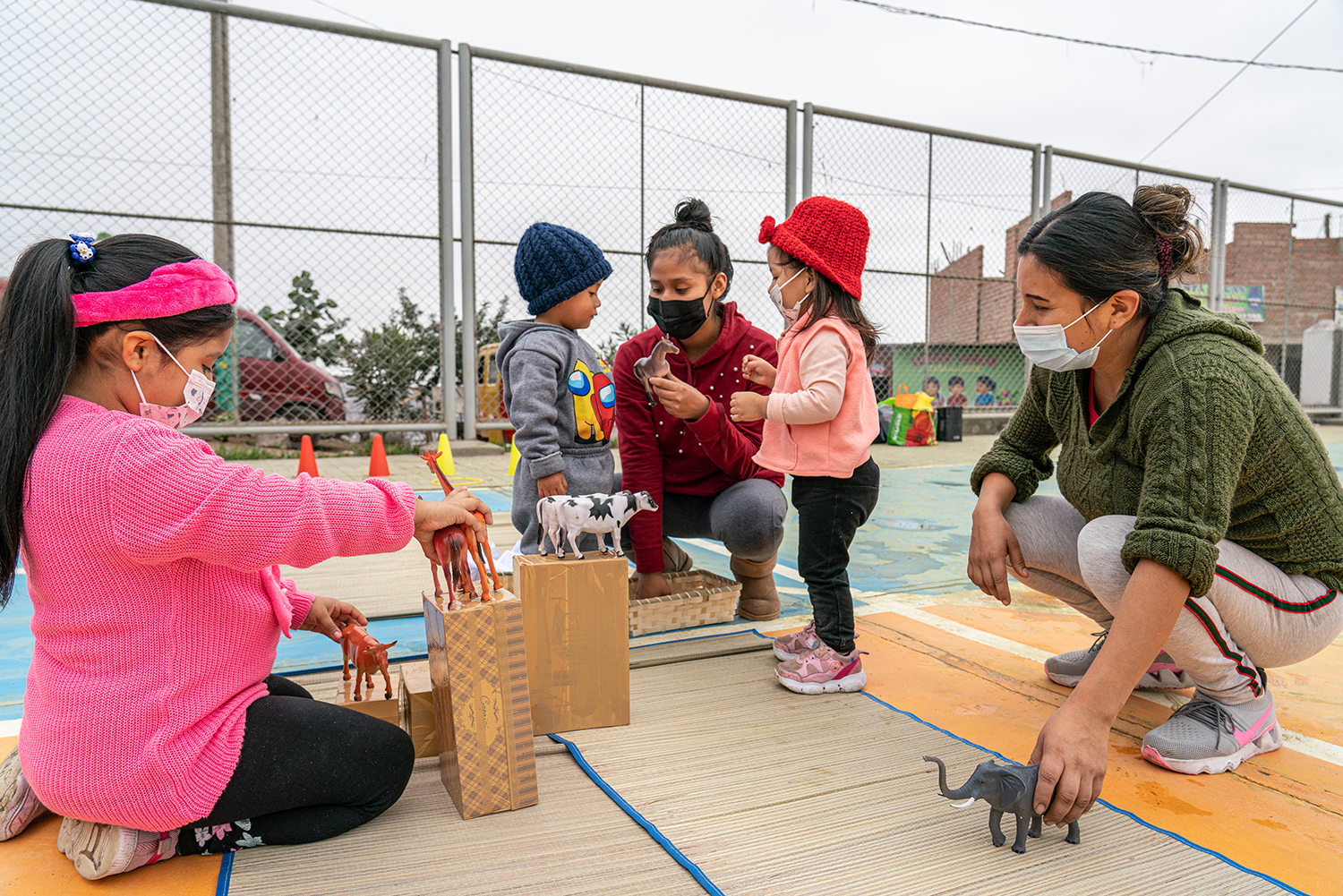
Photo: mothers and children playing in the transformed space in Via El Salvador - Cerro Papa. Courtesy of Reinier van Oorsouw/Bernard van Leer Foundation.
The transformation of public spaces is part of Lima municipality’s adoption of the Foundation’s Urban95 programme, taking to heart the idea that a city that works for young children works for everyone. The interventions are low cost, as they use recycled materials and engage community members as volunteers. They promote walkability to essential services, contact with nature and social cohesion, by bringing families together.
In one of the first spaces transformed, Pasaje Paiva, some locals were initially sceptical about the idea of providing a space for babies as they said no babies were living in the neighbourhood. However, this perception arose only because local caregivers did not feel safe spending time in public spaces with their babies. When the intervention was complete, babies and caregivers were suddenly visible again in public – a reminder of why the Foundation always says that the presence of babies is a good indicator of the perceived safety of the public realm.
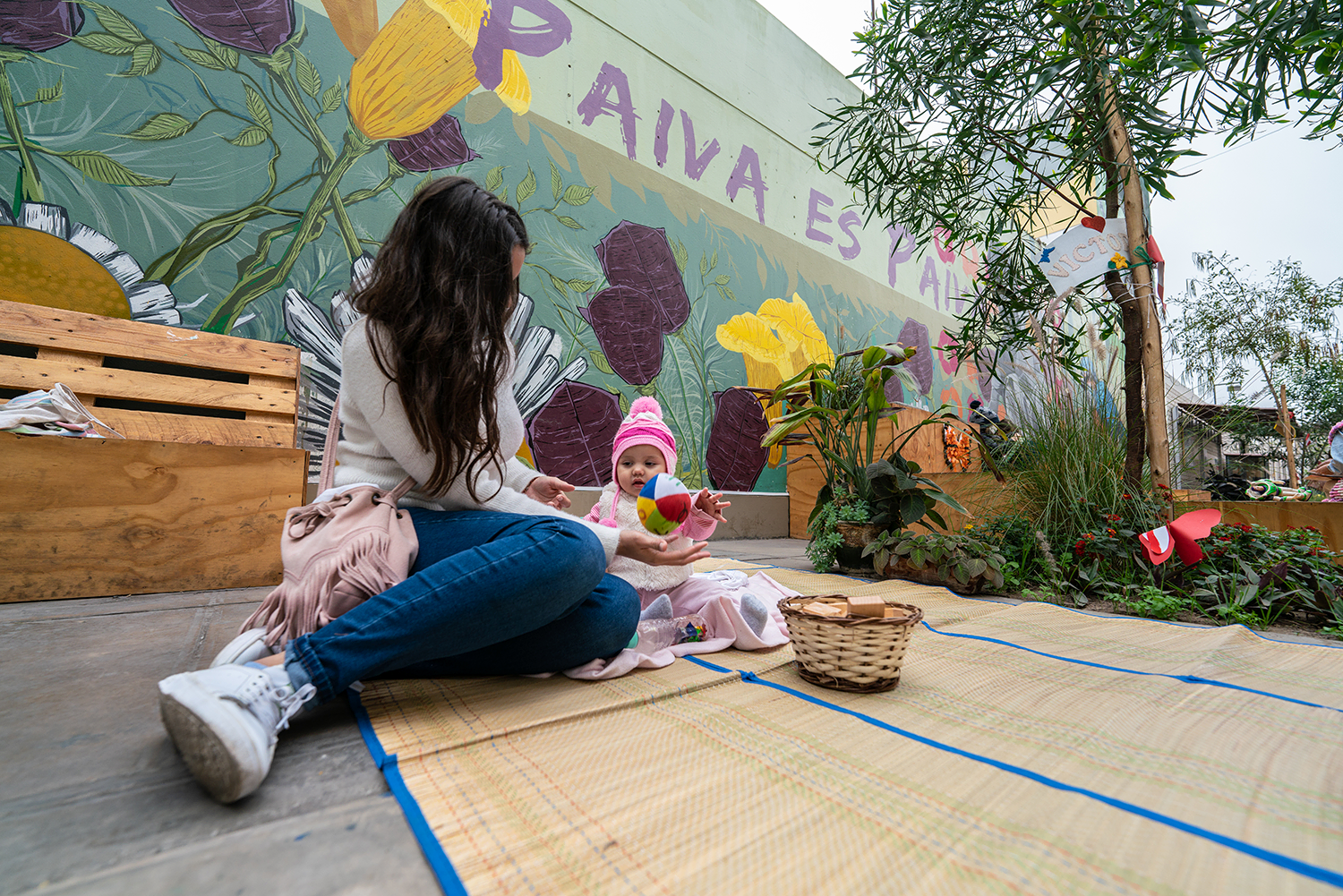
Photo: Mother playing with her baby in the transformed space in Pasaje Paiva. Courtesy of Reinier van Oorsouw/Bernard van Leer Foundation.
Some elements are common across the 12 transformed spaces, including colourful murals and street paintings, the planting of native trees and other vegetation adapted to Lima’s climate – which will provide contact with nature for toddlers, and shade for caregivers to rest in – and urban furniture, made from materials such as recycled wooden pallets, where caregivers can sit and chat, and toddlers can climb and explore.
Other functions depend on the neighbourhood’s characteristics. Some of the transformed spaces give families the option of walking safely to local services such as the preschool or health centre, rather than having to take a moto taxi. Where a space was previously used for parking, a clear separation has been made between the newly pedestrianised area and places to leave vehicles.
In other cases, the spaces transformed are next to a communal kitchen – an increasingly popular concept in Lima, where a group of neighbourhood women volunteers cook low-cost meals for their own and other local families – and include planters for growing vegetables.
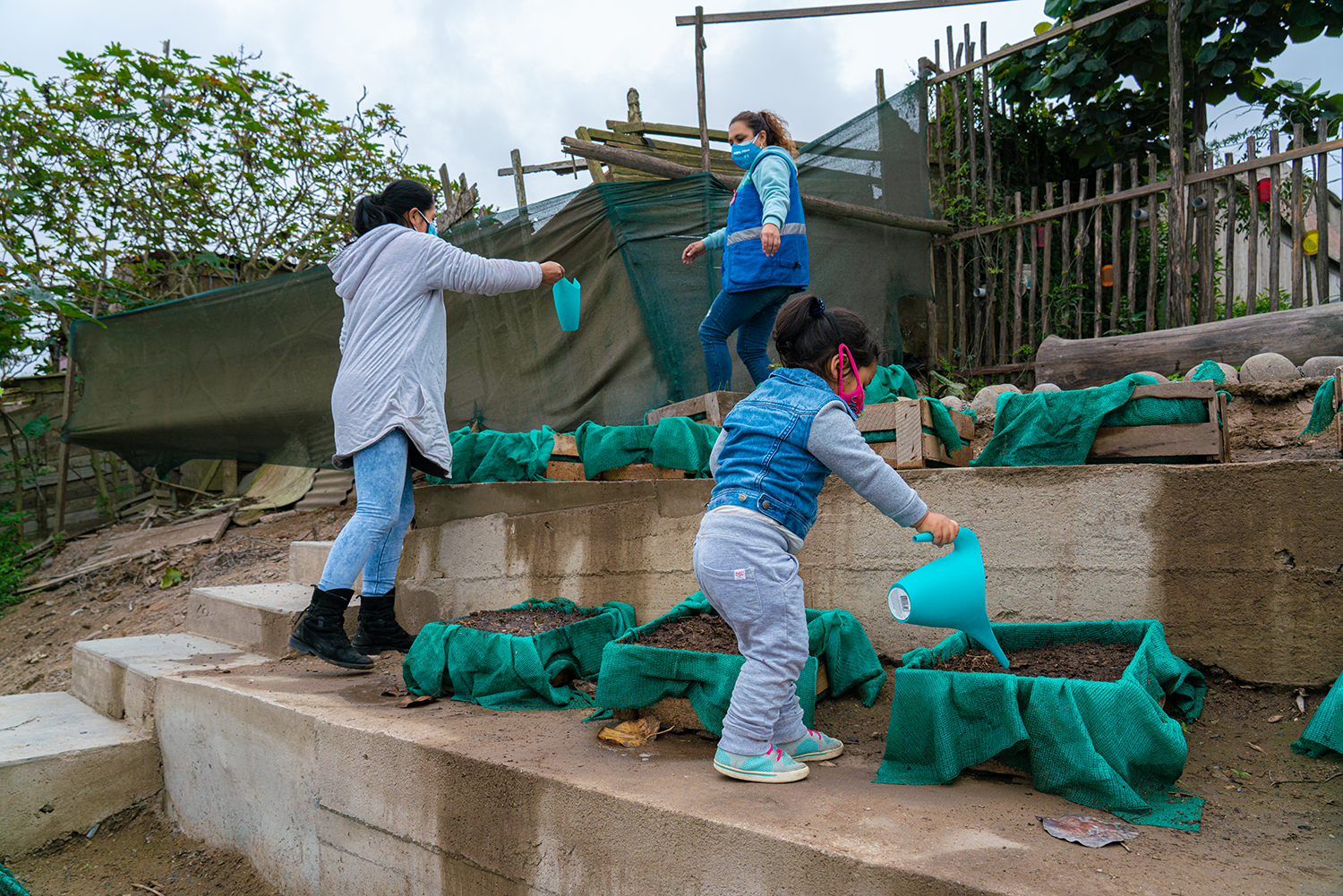
Photo: watering the growing vegetables in the new garden next to the communal kitchen. Courtesy of Reinier van Oorsouw/Bernard van Leer Foundation
Most of the 12 spaces transformed so far are in Lima Cercado, the central part of the city: Jardin Rosa de Santa Maria (former Huerta Perdida); Jr Tajacaya, Monserrate; Pasaje Paiva; Santo Cristo, Barrios Altos; Parque de la Medicina; Camana; Monserrate; Zubiaga; and Palomino. In the district of Villa El Salvador, two locations have been worked on – Lomo de Corvina and Cerro Papa – and one in Surquillo district, Pasaje San Lorenzo y San Carlos.
